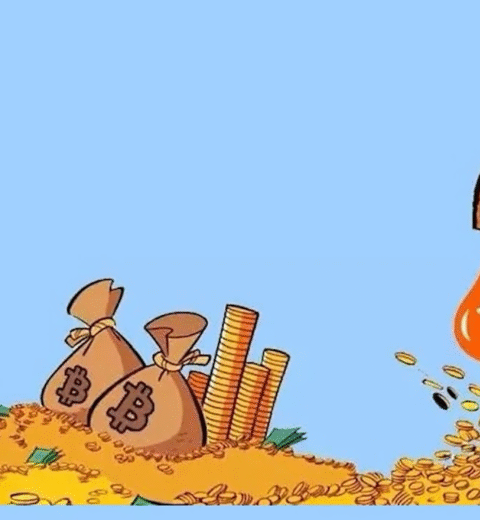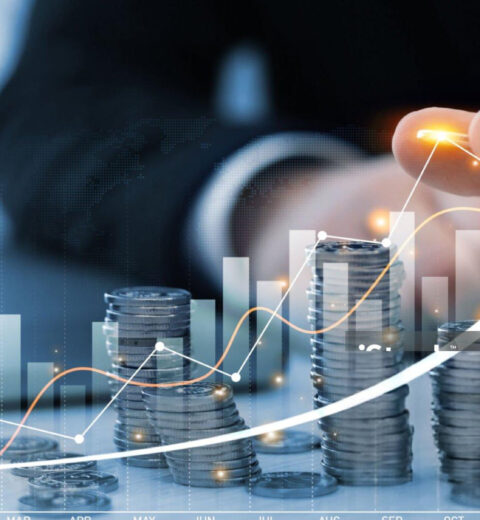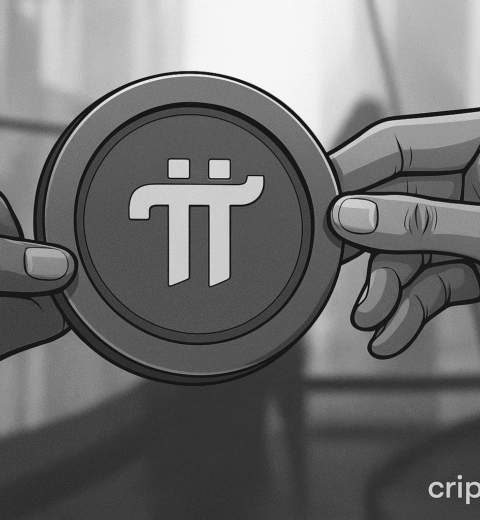Cryptocurrency can feel like a complex puzzle, but Cardano (ADA) stands out as a blockchain platform with a clear mission to solve real-world problems. If you’re wondering, What is Cardano (ADA) used for, this blog will break it down in simple, human-friendly terms. Cardano is more than just a cryptocurrency—it’s a platform designed for security, scalability, and sustainability. In 2025, the real-world use cases of Cardano (ADA) are transforming industries like finance, education, and healthcare. Let’s explore What is Cardano (ADA) used for and why it matters.
This 100% original guide will dive deep into Cardano’s applications, making it easy for beginners to understand while providing valuable insights for all. Let’s get started!
What is Cardano (ADA)?
Cardano is a third-generation blockchain platform launched in 2017 by Charles Hoskinson, a co-founder of Ethereum. Unlike many cryptocurrencies, Cardano focuses on research-driven development, using peer-reviewed science to ensure reliability. Its native token, ADA, powers the network and is used for transactions, staking, and governance.
So, What is Cardano (ADA) used for? It’s a platform for building decentralized applications (dApps), smart contracts, and solutions that prioritize security and sustainability. In 2025, Cardano’s unique features—like its eco-friendly proof-of-stake (PoS) system and layered architecture—make it a leader in blockchain innovation.
Source: Cardano Official Site
Why Cardano Stands Out in 2025
Before diving into What is Cardano (ADA) used for, let’s understand why Cardano is special:
- Eco-Friendly: Uses Ouroboros, a PoS protocol that consumes far less energy than Bitcoin’s proof-of-work.
- Scalable: Handles thousands of transactions per second with upgrades like Hydra.
- Research-Driven: Every feature is peer-reviewed by academics for reliability.
- Community Governance: ADA holders vote on network upgrades, ensuring decentralization.
These strengths make Cardano a go-to platform for solving real-world challenges. Now, let’s explore the top real-world use cases of Cardano (ADA) in 2025.
Top 6 Real-World Use Cases of Cardano (ADA) in 2025
1. Decentralized Finance (DeFi): Empowering Financial Freedom
One of the biggest answers to What is Cardano (ADA) used for is decentralized finance (DeFi). DeFi lets people access financial services—like lending, borrowing, and trading—without banks or middlemen.
How It Works
Cardano’s smart contracts, enabled by the Alonzo upgrade, allow developers to build DeFi apps. Users can lend ADA, earn interest, or trade tokens on platforms like SundaeSwap or Minswap, all running on Cardano.
Why It Matters
- Accessibility: Brings banking to unbanked populations.
- Low Fees: Cardano’s low transaction costs make DeFi affordable.
- Security: Peer-reviewed code reduces risks of hacks.
Example
In 2025, SundaeSwap, a Cardano-based decentralized exchange, lets users swap tokens with minimal fees, competing with Ethereum-based platforms.
Source: SundaeSwap
YouTube Reference: Watch Cardano DeFi Explained for a beginner-friendly guide.
2. Supply Chain Management: Transparent Tracking
Another key answer to What is Cardano (ADA) used for is supply chain management. Cardano ensures products are tracked transparently from origin to consumer.
How It Works
Cardano’s blockchain records every step of a product’s journey, like coffee beans from farm to cup. Smart contracts verify authenticity, and consumers can scan QR codes to see the data.
Why It Matters
- Fraud Prevention: Stops counterfeit goods.
- Transparency: Builds trust with consumers.
- Efficiency: Streamlines logistics processes.
Example
In 2025, Cardano partners with Ethiopia’s coffee industry to track beans, ensuring fair trade and authenticity for global buyers.
Source: Cardano in Ethiopia
X Reference: Follow IOHK’s X posts for updates on Cardano’s supply chain projects.
3. Digital Identity: Secure and Self-Sovereign
What is Cardano (ADA) used for when it comes to identity? Cardano is revolutionizing digital identity by giving people control over their personal data.
How It Works
Cardano’s Atala PRISM platform creates decentralized identities (DIDs). Users store IDs like passports or licenses on the blockchain, sharing only necessary details with services like employers or governments.
Why It Matters
- Privacy: You control who sees your data.
- Security: Encrypted records prevent identity theft.
- Access: Helps unbanked people prove identity for services.
Example
In 2025, Ethiopia uses Atala PRISM to issue digital IDs to millions, enabling access to education and financial services.
Source: Atala PRISM
4. Education: Verifying Credentials
Education is a growing answer to What is Cardano (ADA) used for. Cardano is being used to issue and verify academic credentials securely.
How It Works
Universities store degrees and certificates on Cardano’s blockchain. Employers can verify credentials instantly without contacting institutions, reducing fraud.
Why It Matters
- Fraud Reduction: Stops fake degrees.
- Accessibility: Credentials are globally verifiable.
- Efficiency: Simplifies hiring processes.
Example
In 2025, Ethiopia’s Ministry of Education uses Cardano to issue digital diplomas to 5 million students, ensuring authenticity.
Source: Cardano Education Initiative
5. Healthcare: Secure Data Management
Healthcare is another critical area where What is Cardano (ADA) used for comes into play. Cardano secures patient data and streamlines medical processes.
How It Works
Cardano stores encrypted patient records on its blockchain. Smart contracts allow secure sharing with doctors or insurers, ensuring privacy and accuracy.
Why It Matters
- Privacy: Protects sensitive health data.
- Interoperability: Hospitals share records seamlessly.
- Trust: Patients control their data.
Example
In 2025, Cardano pilots healthcare projects in Africa, enabling secure storage of vaccination records for rural communities.
Source: IOHK Healthcare
6. Governance and Voting: Transparent Systems
What is Cardano (ADA) used for in governance? Cardano enables secure, transparent voting systems for communities and organizations.
How It Works
Cardano’s blockchain records votes immutably, ensuring they can’t be altered. ADA holders also vote on network upgrades through Project Catalyst, a decentralized funding initiative.
Why It Matters
- Transparency: Votes are publicly verifiable.
- Security: Prevents fraud and tampering.
- Participation: Empowers community decision-making.
Example
In 2025, Project Catalyst funds community-driven projects, with ADA holders voting to allocate millions in funding.
Source: Project Catalyst
YouTube Reference: See Cardano Governance Explained for a quick overview.
Comparison Table of Cardano (ADA) Use Cases in 2025
| Use Case | Application | Key Benefits | Example Project |
|---|---|---|---|
| DeFi | Lending, trading, staking | Low fees, accessibility | SundaeSwap |
| Supply Chain | Product tracking | Transparency, fraud prevention | Ethiopia Coffee Project |
| Digital Identity | Self-sovereign IDs | Privacy, security | Atala PRISM |
| Education | Credential verification | Fraud reduction, accessibility | Ethiopia Education |
| Healthcare | Secure patient records | Privacy, interoperability | African Healthcare Pilot |
| Governance | Transparent voting | Security, community participation | Project Catalyst |
Why Cardano (ADA) Matters in 2025
In 2025, What is Cardano (ADA) used for is more relevant than ever due to:
- Sustainability: Its eco-friendly PoS system aligns with global green initiatives.
- Scalability: Hydra upgrades make Cardano faster and more efficient.
- Global Impact: Projects in Africa and beyond show Cardano’s real-world potential.
- Community Power: Decentralized governance gives users a voice.
These factors make Cardano a leader in answering What is Cardano (ADA) used for across diverse industries.
Challenges of Cardano in 2025
While Cardano shines in many areas, it faces challenges:
- Adoption: Competing with Ethereum and Solana for dApp developers.
- Complexity: Its research-driven approach can feel slow to some.
- Awareness: Not all industries know Cardano’s potential.
Despite these, Cardano’s focus on quality and scalability ensures it remains a top choice for real-world use cases of Cardano (ADA).
Tips for Exploring Cardano (ADA) in 2025
- Get a Wallet: Use Daedalus or Yoroi to store ADA safely.
- Stake Your ADA: Earn rewards by staking with Cardano’s pools.
- Join the Community: Follow Cardano on X for updates and insights.
- Explore dApps: Try SundaeSwap or other Cardano-based platforms.
- Stay Safe: Never share your recovery phrase to avoid scams.
X Reference: Check Cardano’s X posts for community updates.
How to Get Started with Cardano (ADA)
Want to dive into What is Cardano (ADA) used for? Here’s how:
- Buy ADA: Use exchanges like Coinbase or Binance.
- Set Up a Wallet: Download Yoroi or Daedalus for secure storage.
- Explore dApps: Try DeFi platforms or Atala PRISM projects.
- Stake ADA: Join a stake pool to earn passive rewards.
- Learn More: Visit Cardano’s official site for tutorials.
Source: Yoroi Wallet
Conclusion
What is Cardano (ADA) used for in 2025? It’s a versatile blockchain powering DeFi, supply chain transparency, digital identity, education, healthcare, and governance. With its eco-friendly design, research-driven approach, and global projects, Cardano is making a real impact. Whether you’re a beginner or a crypto enthusiast, exploring real-world use cases of Cardano (ADA) opens the door to a decentralized future.
Start small with a wallet, stake your ADA, and join the Cardano community to see What is Cardano (ADA) used for in action. The possibilities are endless!
FAQs
What is Cardano (ADA) used for in DeFi?
Cardano (ADA) powers decentralized finance apps like SundaeSwap, enabling lending, borrowing, and trading with low fees and high security, making finance accessible globally.
How does Cardano help with digital identity?
Cardano’s Atala PRISM creates secure, self-sovereign digital IDs, letting users control their data for services like banking or education, ensuring privacy and security.
Can Cardano be used for voting in 2025?
Yes, Cardano enables transparent, tamper-proof voting through Project Catalyst, where ADA holders vote on funding projects, and pilots secure voting systems globally.
Is Cardano eco-friendly in 2025?
Cardano’s proof-of-stake Ouroboros protocol uses minimal energy, making it one of the most sustainable blockchains for real-world use cases of Cardano (ADA).




